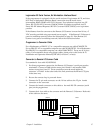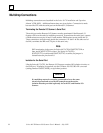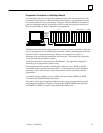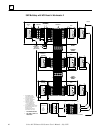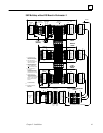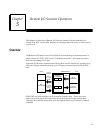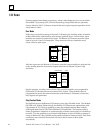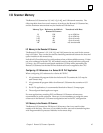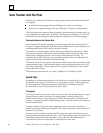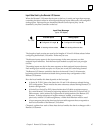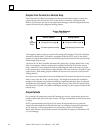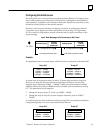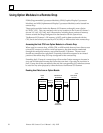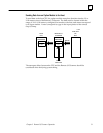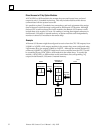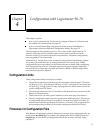
3
Remote I/O Scanner User’s Manual – July 199246
Data Transfer with the Host
Each bus scan, a Remote I/O Scanner exchanges the following data with the host PLC
or computer:
It sends an input message with up to 128 bytes of %I and/or %AI inputs.
It receives an output message with up to 128 bytes of %Q and/or %AQ outputs.
The exact length and content of these messages is determined by the remote drop I/O
map configured for the Remote I/O Scanner. The data from each table (%I, %AI, %Q,
and %AQ) must be contiguous. Data formats are explained on the following pages.
Communications on the Genius Bus
After a Remote I/O Scanner completes a successful login with the controlling PLC or
computer, it begins sending the input data it has scanned from the input modules and
accepting output data for the output modules it controls.
The scanner’s communications with the host are performed asynchronously. When
the scanner receives the Genius bus communications token, it sends the most recent
data from the configured portion of its %I and %AI memories on the bus. As
described above, these memories are repeatedly updated whenever the Remote I/O
Scanner scans the input modules in the remote drop.
The scanner receives new outputs from the host when the host’s bus controller has the
communications token. It places these outputs into the configured portion of its %Q
and %AQ output tables. These outputs are then passed to the devices in the remote
drop on the next I/O scan.
The Genius bus scan time may vary from 3–400mS, but 20–30mS is typical.
Update Rate
Depending on the number and types of I/O modules in a remote drop, the update rate
is typically in the range of 4–7mS, if there is no programmer activity. If the Logicmaster
90–70 programmer is physically attached to the Remote I/O Scanner, and is in
On–line mode, it slows the update rate by about 10mS.
Throughput
If an output in the remote drop is tied to an input in the same remote drop, the output
changes state (or value, in the case of an analog output module) within a few
milliseconds of the new output being sent from the bus controller to the Remote I/O
Scanner. (To guarantee that an output changes state, it must be present for at least one
Genius bus scan time).
The input which is tied to the output responds as soon as any load–effects have
settled out and input filtering is completed. This may occur as soon as the Remote I/O
Scanner’s next I/O scan.
An input must be present for at least one PLC sweep time plus one Genius bus scan
time to guarantee its detection by the host. If the input changes state only briefly, and
then changes again before the input data is sent on the bus, the change may be
overwritten by some new input state or value before it can be sent.



